Manuel R. Ciosici
Remember what you did so you know what to do next
Oct 30, 2023



Abstract:We explore using a moderately sized large language model (GPT-J 6B parameters) to create a plan for a simulated robot to achieve 30 classes of goals in ScienceWorld, a text game simulator for elementary science experiments. Previously published empirical work claimed that large language models (LLMs) are a poor fit (Wang et al., 2022) compared to reinforcement learning. Using the Markov assumption (a single previous step), the LLM outperforms the reinforcement learning-based approach by a factor of 1.4. When we fill the LLM's input buffer with as many prior steps as possible, improvement rises to 3.5x. Even when training on only 6.5% of the training data, we observe a 2.2x improvement over the reinforcement-learning-based approach. Our experiments show that performance varies widely across the 30 classes of actions, indicating that averaging over tasks can hide significant performance issues. In work contemporaneous with ours, Lin et al. (2023) demonstrated a two-part approach (SwiftSage) that uses a small LLM (T5-large) complemented by OpenAI's massive LLMs to achieve outstanding results in ScienceWorld. Our 6-B parameter, single-stage GPT-J matches the performance of SwiftSage's two-stage architecture when it incorporates GPT-3.5 turbo which has 29-times more parameters than GPT-J.
Training a T5 Using Lab-sized Resources
Aug 25, 2022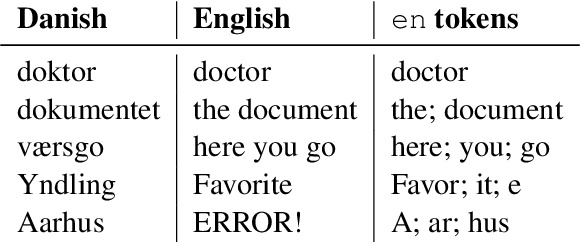
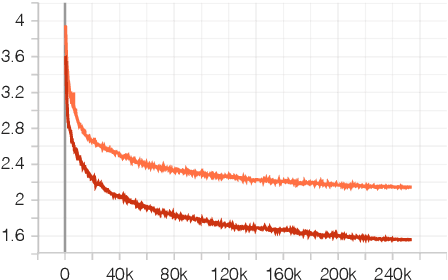
Abstract:Training large neural language models on large datasets is resource- and time-intensive. These requirements create a barrier to entry, where those with fewer resources cannot build competitive models. This paper presents various techniques for making it possible to (a) train a large language model using resources that a modest research lab might have, and (b) train it in a reasonable amount of time. We provide concrete recommendations for practitioners, which we illustrate with a case study: a T5 model for Danish, the first for this language.
Perhaps PTLMs Should Go to School -- A Task to Assess Open Book and Closed Book QA
Oct 04, 2021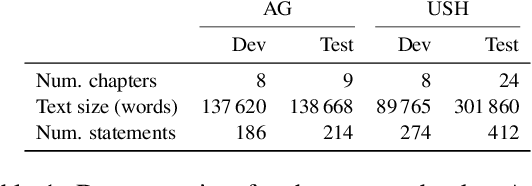
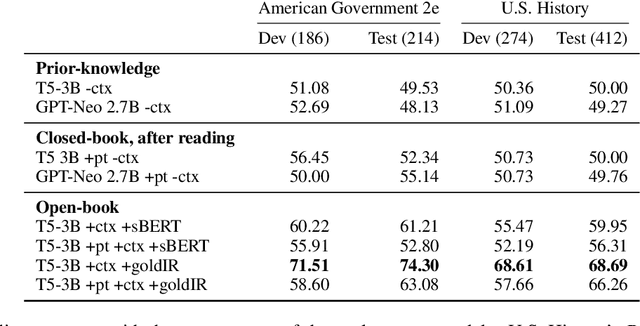
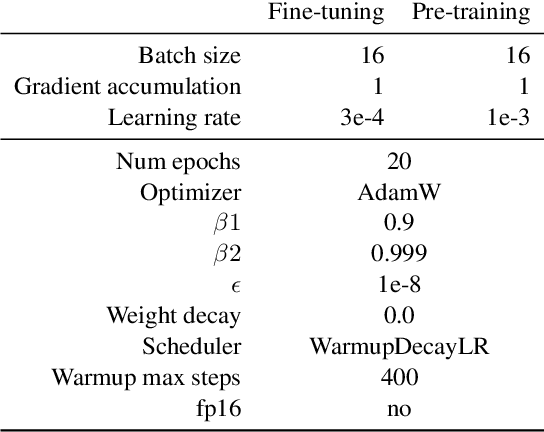
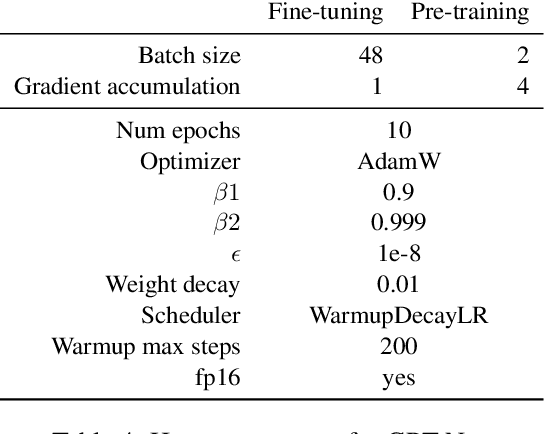
Abstract:Our goal is to deliver a new task and leaderboard to stimulate research on question answering and pre-trained language models (PTLMs) to understand a significant instructional document, e.g., an introductory college textbook or a manual. PTLMs have shown great success in many question-answering tasks, given significant supervised training, but much less so in zero-shot settings. We propose a new task that includes two college-level introductory texts in the social sciences (American Government 2e) and humanities (U.S. History), hundreds of true/false statements based on review questions written by the textbook authors, validation/development tests based on the first eight chapters of the textbooks, blind tests based on the remaining textbook chapters, and baseline results given state-of-the-art PTLMs. Since the questions are balanced, random performance should be ~50%. T5, fine-tuned with BoolQ achieves the same performance, suggesting that the textbook's content is not pre-represented in the PTLM. Taking the exam closed book, but having read the textbook (i.e., adding the textbook to T5's pre-training), yields at best minor improvement (56%), suggesting that the PTLM may not have "understood" the textbook (or perhaps misunderstood the questions). Performance is better (~60%) when the exam is taken open-book (i.e., allowing the machine to automatically retrieve a paragraph and use it to answer the question).
A reproduction of Apple's bi-directional LSTM models for language identification in short strings
Feb 11, 2021
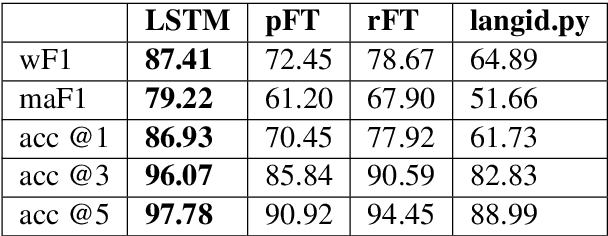
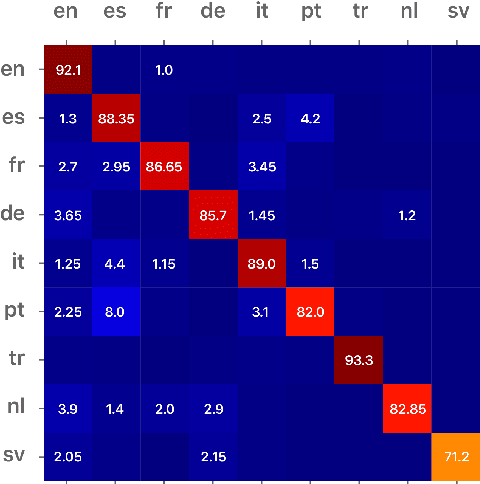
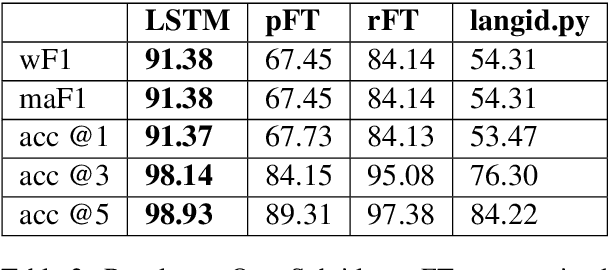
Abstract:Language Identification is the task of identifying a document's language. For applications like automatic spell checker selection, language identification must use very short strings such as text message fragments. In this work, we reproduce a language identification architecture that Apple briefly sketched in a blog post. We confirm the bi-LSTM model's performance and find that it outperforms current open-source language identifiers. We further find that its language identification mistakes are due to confusion between related languages.
Machine-Assisted Script Curation
Jan 14, 2021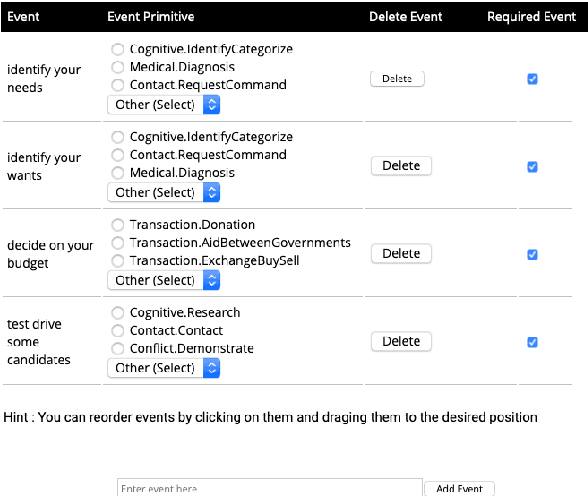

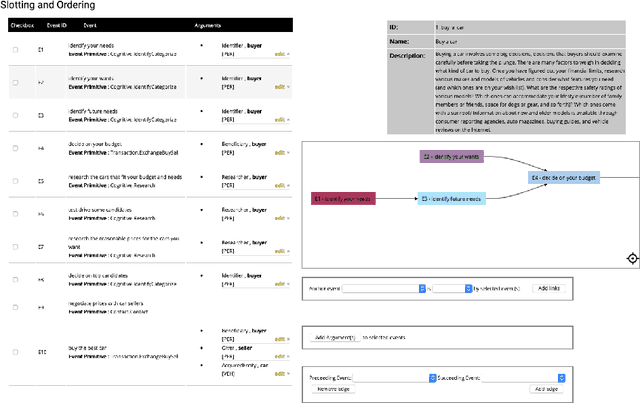
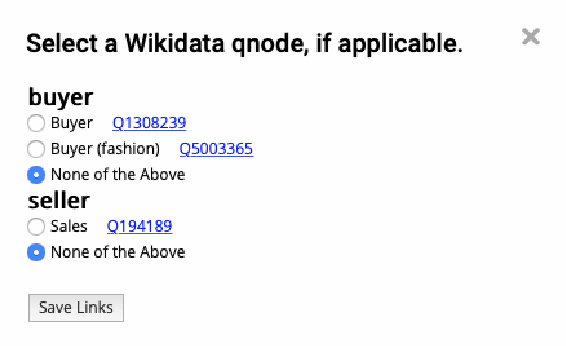
Abstract:We describe Machine-Aided Script Curator (MASC), a system for human-machine collaborative script authoring. Scripts produced with MASC include (1) English descriptions of sub-events that comprise a larger, complex event; (2) event types for each of those events; (3) a record of entities expected to participate in multiple sub-events; and (4) temporal sequencing between the sub-events. MASC automates portions of the script creation process with suggestions for event types, links to Wikidata, and sub-events that may have been forgotten. We illustrate how these automations are useful to the script writer with a few case-study scripts.
The Danish Gigaword Project
May 08, 2020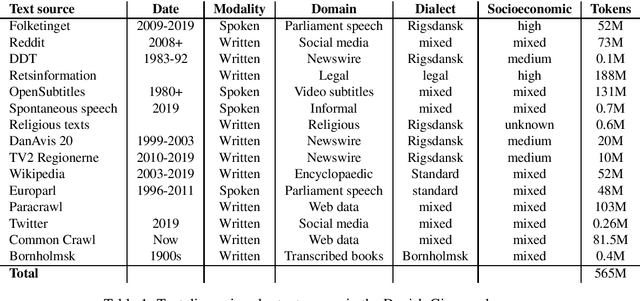
Abstract:Danish is a North Germanic/Scandinavian language spoken primarily in Denmark, a country with a tradition of technological and scientific innovation. However, from a technological perspective, the Danish language has received relatively little attention and, as a result, Danish language technology is hard to develop, in part due to a lack of large or broad-coverage Danish corpora. This paper describes the Danish Gigaword project, which aims to construct a freely-available one billion word corpus of Danish text that represents the breadth of the written language.
Improving Quality of Hierarchical Clustering for Large Data Series
Aug 03, 2016

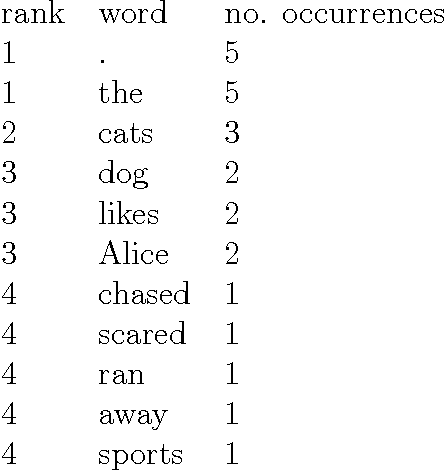

Abstract:Brown clustering is a hard, hierarchical, bottom-up clustering of words in a vocabulary. Words are assigned to clusters based on their usage pattern in a given corpus. The resulting clusters and hierarchical structure can be used in constructing class-based language models and for generating features to be used in NLP tasks. Because of its high computational cost, the most-used version of Brown clustering is a greedy algorithm that uses a window to restrict its search space. Like other clustering algorithms, Brown clustering finds a sub-optimal, but nonetheless effective, mapping of words to clusters. Because of its ability to produce high-quality, human-understandable cluster, Brown clustering has seen high uptake the NLP research community where it is used in the preprocessing and feature generation steps. Little research has been done towards improving the quality of Brown clusters, despite the greedy and heuristic nature of the algorithm. The approaches tried so far have focused on: studying the effect of the initialisation in a similar algorithm; tuning the parameters used to define the desired number of clusters and the behaviour of the algorithm; and including a separate parameter to differentiate the window from the desired number of clusters. However, some of these approaches have not yielded significant improvements in cluster quality. In this thesis, a close analysis of the Brown algorithm is provided, revealing important under-specifications and weaknesses in the original algorithm. These have serious effects on cluster quality and reproducibility of research using Brown clustering. In the second part of the thesis, two modifications are proposed. Finally, a thorough evaluation is performed, considering both the optimization criterion of Brown clustering and the performance of the resulting class-based language models.
 Add to Chrome
Add to Chrome Add to Firefox
Add to Firefox Add to Edge
Add to Edge